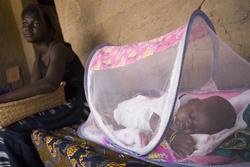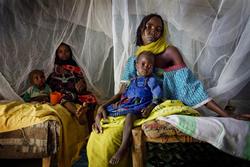世界疟疾日
2010-04-25
联合国儿童基金会于「世界疟疾日」(25/4)唿吁全球推行疟疾防预工作
全球每年有达850,000人死于蚊叮,当中近九成来自非洲撤哈拉周边地区,亦是当地致命率最高的一个原因。保守估计,在撤哈拉一带每30秒就有一名儿童死于疟疾,当中大部分死者均少于5岁。疟疾是一种可致命的严重疾病,主要透过疟蚊传染,是儿童的大敌。由于儿童的免疫力较弱,一旦被疟蚊叮中,体内的免疫力並不足以抵抗疟疾,病菌便会迅速扩散,导致昏迷,甚至死亡。据此,联合国儿童基金会唿吁全球一同打击疟疾,全面推行疟疾防预工作,拯救数以万计的生命。
 |
 |
对抗疟疾好处多:
- 减少疟疾感染率,有助减低各地健康院需求紧张的压力;
- 疟疾是导致爱滋病患者死亡的一大主因,成功控制疟疾散播,变相可减少爱滋病患者的死亡率;
- 营养不良的儿童减染疟疾,致命的风险较一般儿童更高。因此有效控制疟疾传染,可同时减少儿童营养不良的死亡率;
- 预防疟疾,更有助提升孕妇及婴儿的健康。









